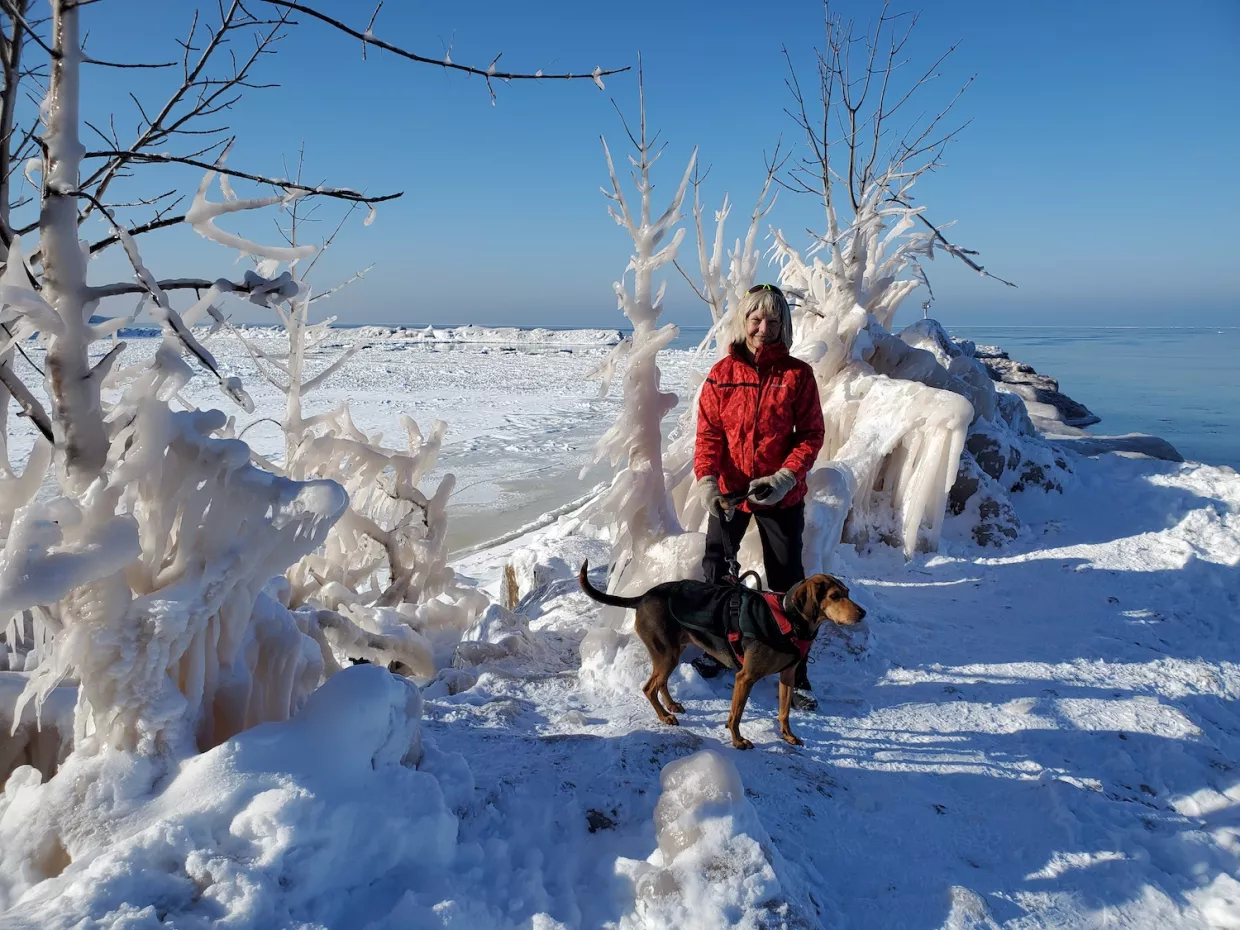Spine surgery helps Denise return to active life after agonizing back pain

Denise Flory of Cedar Falls, Iowa, enjoys gardening, long bike rides, hiking, kayaking, and anything outdoors with her husband, Ron. But for a while, her active lifestyle quickly faded. Nagging back pain kept getting worse until all activity came to a halt.
“I couldn’t stand up straight, and I could barely walk,” Denise says. “I felt like I was frozen in place, like a statue. The pain was frequently too intense to move.”
Physical therapy and pain medicine didn’t help. Finally, a pain specialist referred Denise to University of Iowa Hospitals & Clinics, where neurosurgeon Patrick Hitchon, MD, performed a challenging spinal fusion that relieved the pain and returned Denise to her active life.
“Today, I look forward to getting up in the morning,” Denise says. “I don’t worry about when the pain will start. I can walk and do yoga. I’ve even enjoyed cross-country skiing. I feel truly blessed with my outcome.”
'Life-altering' pain
Denise says the pain crept up on her gradually. For a while, she tried to find ways to live with it.
“Initially, I would do what I could,” Denise says. “I could ride a stationary bike and walk some without pain, only to change my shoes and be stopped. Without warning, intense pain would hit. The pain and limited function were horrible and life-altering.”
Searching for relief, Denise talked with her primary care doctor, a physical therapist, a neurologist, and a pain specialist. MRIs revealed that the cause of her pain was spinal stenosis, extreme narrowing in the spinal canal that puts ever-increasing pressure on the spinal nerves.
But even with the diagnosis, relief from the pain seemed impossible until she was referred to Hitchon. He reviewed the X-rays and MRI of her lower back and determined that her spinal stenosis was severe. He also diagnosed a serious complication that made the compression on her nerves even worse.
“Denise had severe narrowing of the spine in two places—between the third and fourth vertebrae and between the fourth and fifth vertebrae,” Hitchon says. “She also had a forward slip of the fourth bone on the fifth vertebra. This combination of narrowing and slippage results in symptoms called neurogenic claudication.”
Choosing spine surgery for pain relief
Using illustrations and language that Denise could understand, Hitchon explained the diagnosis and the surgical options available to address it.
“He showed me how my spine looked and what he would do during surgery to correct my condition,” Denise says. “He explained the pros and cons.”
Whenever possible, Hitchon treats his spine patients without surgery.
“Then, if other treatments have not helped, and you’re modifying your work and daily activities due to extreme pain, then surgery is justifiable,” he says. “We encourage patients to discuss their options with a family member or local physician. No pressure.”
Before making a decision, Denise consulted with her husband and assessed her situation. She was miserable with pain. Nonsurgical treatments did not help. And she had been modifying her activities, just as Hitchon described. She was ready to move forward with surgery.
Hitchon performed spinal decompression, along with instrumentation and fusion, to correct Denise’s spinal column, placing bone screws into the spine vertebrae and spacers between them to maintain the right curve and height of the spine.
“These conditions require unkinking of the spine and correcting the slippage of bone so that the nerves are no longer squeezed and can receive better blood supply,” Hitchon says. “After relieving the pressure and correcting the deformity, generally patients can return to a normal life.”
Walking without pain
Denise says her care after surgery was as expert and compassionate as the rest of her experience.
“Dr. Hitchon checked on me each day,” she says. “I appreciated his upbeat philosophy. Before leaving the hospital, he gave me a card with his discharge plan. And he cautioned me to sit straight without bending and twisting, which was very important at that time.”
On the third day after surgery, Denise left the hospital.
The staff had already scheduled follow-up appointments for her—staple removal by her primary care physician, X-rays, and a visit with Hitchon.
“That was such a relief,” Denise says. “Less to worry about.”
Her physical therapy instructions were simple: Walk.
While she recovered at home, Denise received calls from a nurse to check on her progress.
“We give every patient the individualized care that we would expect for ourselves,” Hitchon says. “I tell patients that if my family members were sitting here, I would treat them the same way.”
Now Denise and Ron look forward to more outdoor adventures.
“To walk without pain is a gift,” Denise says. “I am very grateful to Dr. Hitchon, the surgical team, and the nurses for their expertise and care.”